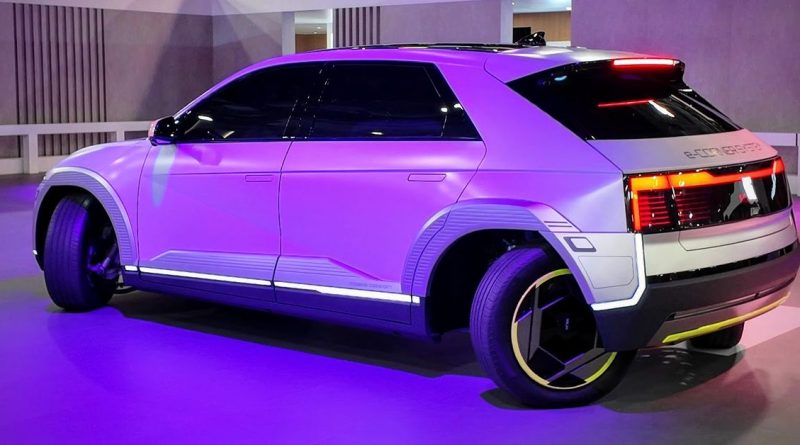I rode in a Hyundai Ioniq 5 with wheels that go sideways
When I was a boy, I wanted a Ferrari Testarossa. As a teen, I’d have told you James Bond’s tricked out Aston Martin DB5 would be my ride of choice. Today, I have a new answer: a Hyundai Ioniq 5 with magic wheels that turn sideways.
Because when you have four wheels that turn sideways, dear reader, tantalizing possibilities unfold.
- Effortless parallel parking because you can simply slide sideways into a spot!
- Never having to back up in a parking lot because you can simply spin around.
- Never having to correct your parking in a standard parking spot — because the butt of your vehicle can slide out faster than the front for (theoretically) a perfect entrance every time.
- Diagonal driving to dodge obstacles without swerving, or switch lanes without body roll.
Are you skeptical? I’m skeptical! But far less skeptical than I was before I took the Hyundai Mobis e-Corner System for a ride at CES 2024.
They didn’t let me drive the car, but I sat in the front passenger seat and watched the whole operation. My driver pressed a button on a touchscreen tablet corresponding to his fancy maneuver of choice: “Crab Driving” to go sideways, “Zero Turn” to spin in place, “Pivot Turn” to slide out the rear in a controlled drift, and so on. The driver doesn’t have to steer each wheel individually, it’s computer-controlled, and It looked as effortless within the cabin as it did outside.
Wouldn’t you accidentally hit someone this way? It certainly seems like a possibility, but Hyundai Mobi is imagining cars will contain additional cameras, sensors, and even projectors to warn others how your car is moving.
In case it’s not obvious, what’s happening here is that each wheel mechanically operates independently from the rest. There’s no axles, no steering linkage, no shared motors — each wheel has its own independent drive motor, steering motor, suspension, and brakes. It’s all linked up electronically with a steer-by-wire system, with a computer rotating each miniature steering column and spinning each wheel the proper amount for the turn you’re trying to make.
All of which means this isn’t a system you’re ever going to see on a gasoline vehicle — it’s exclusively for EVs, which don’t need axles to transfer their power from an internal combustion engine.
But axles still have their uses. The normal Hyundai Ioniq 5 still has them, for example, and you can fit a much bigger electric motor around an axle than you can fit inside a wheel.
That may be one reason why Lee Seung-hwan, VP and head of advanced engineering at Hyundai Mobis, says we shouldn’t expect to see this tech in a sports car. He admits that one of the system’s weaknesses is high speed, that it’s not something you’d find in a car expected to go 200 or 300 kilometers per hour (120-185mph). In fact, he says it’s only been tested up to a maximum of 80 kilometers per hour so far, or around 50 mph.
But he says he still has a couple of years to bring it to market, and the hope is to bring it close to South Korea’s current maximum highway speed of 110 kilometers per hour.
What about battery life? Tire wear? Surprisingly, Lee and company say they aren’t major concerns — they’re expecting slight additional tread wear, but say “battery usage is in the general range” despite the additional motors.
The bigger surprise is price: “I don’t think price of this system would be much higher than the ordinary system,” Lee tells us. He wouldn’t speculate at a number, but after much prodding he maintained that it would only cost a slight premium.
Hyundai isn’t committing to build this car itself. Its subsidiary Hyundai Mobis is an automotive supplier that hopes to sell this tech to automakers globally beginning in 2026. Lee guesses it would take 2-3 years after that to see it on the road.
Can we have this by the end of the decade, then? I sincerely hope so. I do think it’s going to be difficult for many automakers to intentionally sell a slower car in exchange for a system like this — but it would be the reason to buy such a car for people like me.
Heck, Sony’s Afeela electric car could badly use something as obviously desirable as this.
Photography and video clips by Sean Hollister / The Verge





